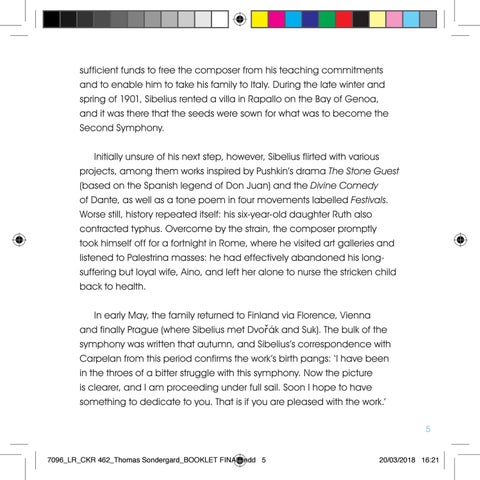sufficient funds to free the composer from his teaching commitments and to enable him to take his family to Italy. During the late winter and spring of 1901, Sibelius rented a villa in Rapallo on the Bay of Genoa, and it was there that the seeds were sown for what was to become the Second Symphony.
Initially unsure of his next step, however, Sibelius flirted with various
projects, among them works inspired by Pushkin’s drama The Stone Guest (based on the Spanish legend of Don Juan) and the Divine Comedy of Dante, as well as a tone poem in four movements labelled Festivals. Worse still, history repeated itself: his six-year-old daughter Ruth also contracted typhus. Overcome by the strain, the composer promptly took himself off for a fortnight in Rome, where he visited art galleries and listened to Palestrina masses: he had effectively abandoned his longsuffering but loyal wife, Aino, and left her alone to nurse the stricken child back to health. In early May, the family returned to Finland via Florence, Vienna and finally Prague (where Sibelius met Dvořák and Suk). The bulk of the symphony was written that autumn, and Sibelius’s correspondence with Carpelan from this period confirms the work’s birth pangs: ‘I have been in the throes of a bitter struggle with this symphony. Now the picture is clearer, and I am proceeding under full sail. Soon I hope to have something to dedicate to you. That is if you are pleased with the work.’ 5 7096_LR_CKR 462_Thomas Sondergard_BOOKLET FINAL.indd 5
20/03/2018 16:21
